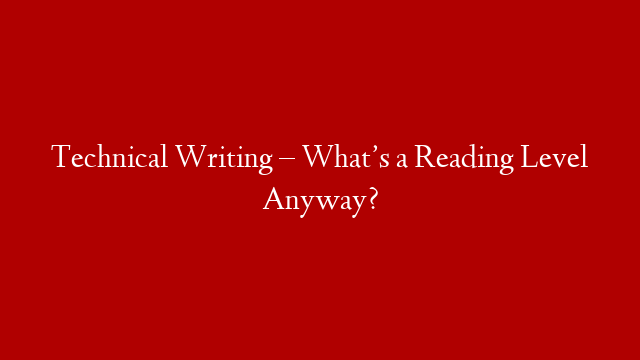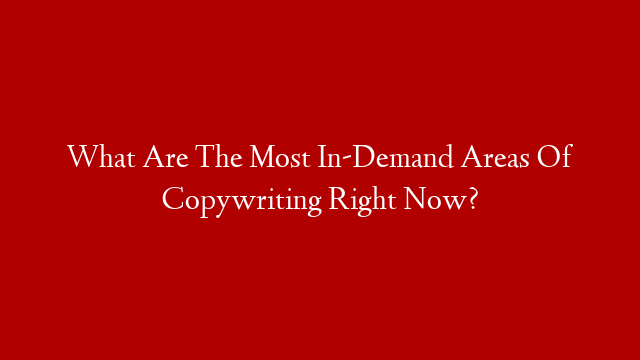“The art of art, the glory of expression and the sunshine of the light of letters, is simplicity.”
Walt Whitman, 1819-1892, American Poet
The client said, “We want this written at a 10th-grade reading level.” I said, “What’s a 10th-grade reading level and how is it measured?” The client said, “Hey, will you look at the time! I have to leave right now.”
Similar experiences on a number of occasions made me think that people use the phrase reading level without actually knowing what it means. They read it somewhere and think they sound smarter if they can toss it into the conversation. That sent me on a quest to find out what it means and how it’s measured. Here’s what I found out.
First, this is an important issue, and one that’s not well understood or carefully considered by many clients and the tech writers who work for them. For writers with a lot of experience who write for a wide range of audiences, it becomes instinctive. They know their audiences. They know how to write in a way that the readers can understand. They make adjustments for the specific audience they’re writing for. For writers new to the business or with experience writing for a limited audience, it can be a problem when they need to write for an audience they’re not familiar with.
Next, when people say something is written at a tenth-grade reading level the target audience’s ability to read that concerns us. Someone could read “Uber der Welt so hoch” and still not understand it. The goal is to write in a way that the target audience can comprehend. That involves using vocabulary and sentence structure that fits the reading comprehension level of the audience. , it’s a misnomer. What they really mean is that it’s written at a tenth grade comprehension level or what’s called a readability level. It’s not
Finally, the good news. Readability can be measured. The experts in the field of linguistics know what a tenth-grade readability level is and how it’s different from another level. It’s not an exact science, but it’s well enough developed that it can be used by writers to help them hit the mark with more accuracy. We won’t get into the really technical aspects of the subject, but we’ll provide enough background and illustrations that you’ll know how to find out more about it.
Readability Formulas
Readability formulas are used to determine if a document is written at the right comprehension level for the target audience. There are a number of readability formulas used by various linguistic groups. For now, we’re going to focus on the Gunning’s Fog Index because it’s one of the most famous and one any writer can use. The index was developed by Robert Gunning in 1952. The basic idea is that the bigger the words and the more complex the sentences, the more difficult it is to understand the document. Small words and short sentences are still the easiest to understand.
For convenience, the Fox Index levels equates to the number of years of formal education a reader needs to understand the material. By the way, this is based on the American system of twelve elementary and high school grades with the number of years of college education numbered thirteen and up. A high school education is a level 12. A master’s degree would be about a level 16.
To put this in perspective, a typical big-city newspaper is written at a level 7 or 8. The belief in most industries is that anything above a level 12 is too hard for most readers to understand. Remember, the Fox Index is not an absolute measure. It is, though, when used over a range of samples, a very good indicator. Here are some Fox Index levels for popular publications.
Atlantic Monthly = 12
Newsweek = 10
Reader’s Digest = 9
True Confessions = 7
Most comic books = 6
(This article = 11.6)
The Fog Index Applied
Here is an example of the same information written at two different readability levels as measured by the Fog Index.
Example One: Untold numbers of eternally optimistic individuals buy lottery tickets with odds in the multimillions against their chances of realizing success. They’re sustained by a level of ignorance that keeps them from recognizing that the likelihood that such an unrealistic eventuality would actually occur is of an order of magnitude beyond their capacity to comprehend. They cling to the notion that if an event is possible it certainly must happen regardless of how great the statistical chances are against it. Their cry is always, “Well, somebody’s got to win,” which is sufficient to block even the brightest glare of the cold light of reason.
The level is arrived at by counting the number of words, the number of sentences, and the number of three-syllable, or longer, words. Then a formula is applied that gives the readability index level. In this example, there are 103 words, 4 sentences, and 20 three-syllable words. Using the formula, the Fog Index level is 18. That means the reader should probably have a doctorate to ensure comprehension.
Example Two: A lot of people who never give up hope buy lottery tickets even though the odds against them ever winning are enormous. What keeps them buying tickets is that they aren’t able to understand that the odds against them are so great that they can’t really expect to win. They believe that because something is possible, then it must happen no matter what the odds against it are. Saying, “Well, somebody’s got to win,” is enough to keep them from seeing the reality of the situation.
Using the same method, the 86 words, 4 sentences, and 6 three-syllable words in this example give a Fog Index level of 11. That’s a high school junior.
Now You Try It
Pick a text sample from a source you’re familiar with. It helps if it’s a fairly big block of text. The larger the sample, the more accurate the index figure is. For example, I selected two blocks of text from the guide that came with my Nikon camera. Follow me through the process:
1. Count the number of words in the sample. If there are hyphenated words, count each part as one word.
(My count: 120) (Your count: )
2. Count the number of sentences in the sample.
(My count: 5) (Your count: )
3. Count the number of big words in the sample: 3 or more syllables.
(My count: 3) (Your count: )>
4. Calculate the average sentence length. To do this, divide the number of words by the number of sentences. For example, 120 divided by 5.
(My number: 24) (Your number: )
5. Calculate the percentage of big words. To do this, divide the number of big words by the total number of words. For example, 3 divided by 120 = .02 = 2%.
(My number: 2) (Your number: )
6. Add the average sentence length to the % of big words.
(My number: 26) (Your number: )
7. Multiply the result by 0.4.
Fog Index (My level: 10th grade) (Your level: )
Now try it on something you’ve written. From what you know about your audience, does your Fog Index match with the readers’ comprehension level? It’s a very important question, and this formula can help you answer it.
For more information on readability formulas, use any search engine to find sites related to readability formulas, Passive Index, Flesch-Kincaid Index, or Lexical Density Test.



